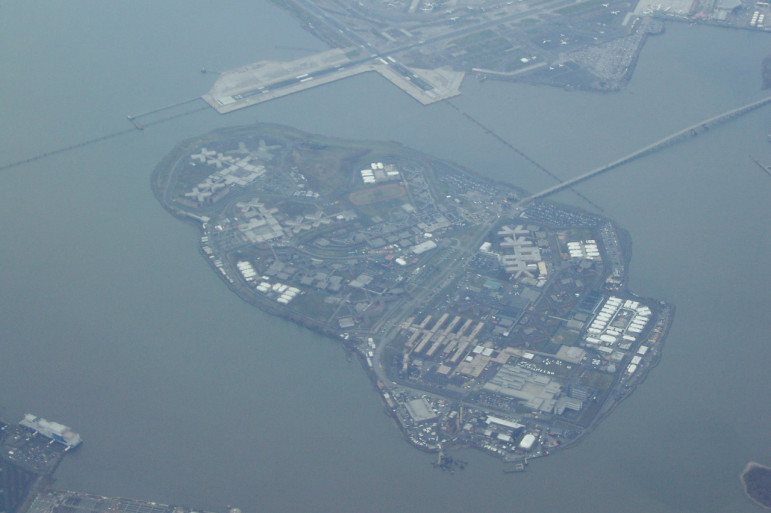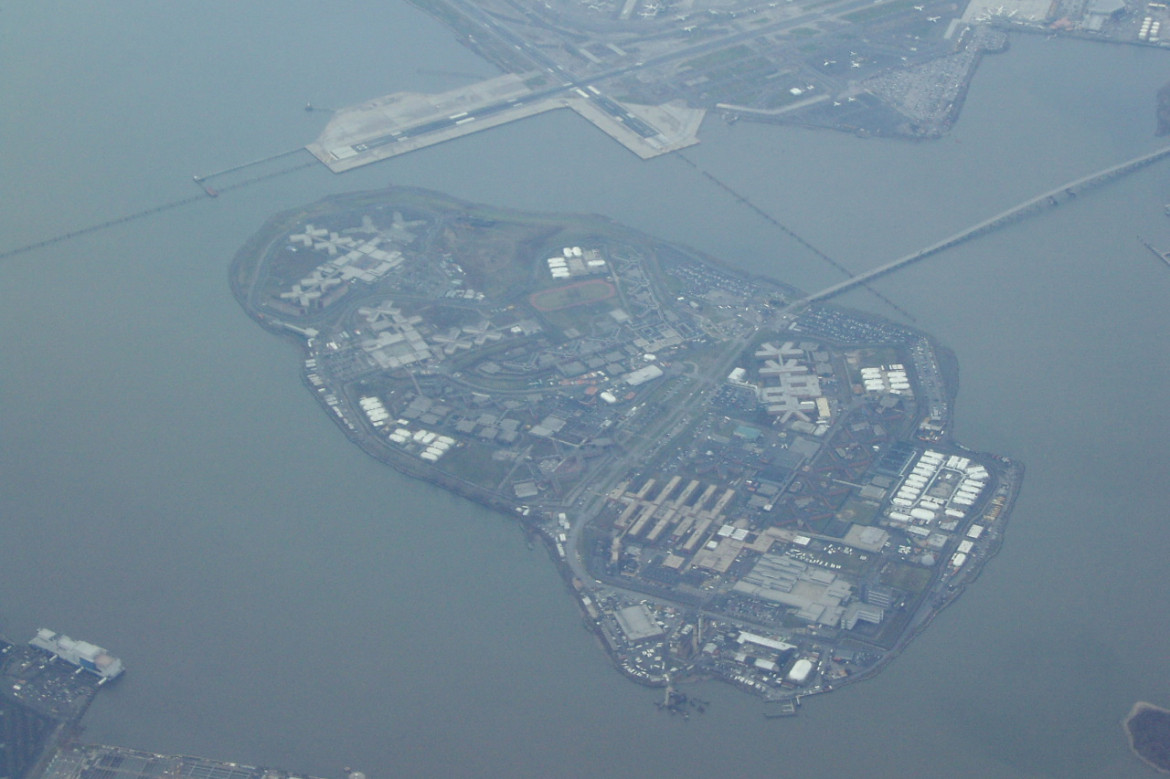
Russ Nelson / Flickr
At times, more than a quarter of Rikers’ adolescent population (numbering in the hundreds) was held in prolonged solitary confinement — nearly always before being convicted of any crime.
From The Center for Investigative Reporting:
For years, New York City’s Department of Correction has worked to conceal its practice of putting adolescent inmates in solitary confinement. But last week, the agency announced plans to eliminate such confinement for 16- and 17-year-old inmates.
The swift action indicates that juvenile solitary confinement has become a human rights issue that officials nationwide can no longer ignore.
The changes come after several months of media scrutiny and a critical U.S. Department of Justice investigation calling on the agency to revamp its treatment of adolescents. The Center for Investigative Reporting was the first to report on the issue earlier this year. Here are some key things to understand about juvenile solitary confinement in the U.S. and the efforts to reform it.
Most youth detention facilities in the United States use some form of prolonged isolation for teens. Solitary confinement often is the default intervention used for teenagers in lieu of adequate staff training and supervision and mental health services for inmates.
 While correction officers say solitary confinement is needed to control violent young inmates, our reporting found that teens are routinely sent for minor infractions. At Rikers Island, guards are permitted to isolate inmates for days or weeks for talking back, horseplay and possession of “unauthorized amounts” of clothing or art supplies.
While correction officers say solitary confinement is needed to control violent young inmates, our reporting found that teens are routinely sent for minor infractions. At Rikers Island, guards are permitted to isolate inmates for days or weeks for talking back, horseplay and possession of “unauthorized amounts” of clothing or art supplies.
We know little about how many young inmates get placed in solitary, why and for how long. This is what Juan Méndez, the United Nations’ special rapporteur on torture, called “a chaos of information.” Juvenile solitary confinement is torture, he said, and no one knows how common it is.
Because most U.S. facilities are not required to track or report their use of isolation for juveniles, the practice has flourished in the shadows. And because no federal laws prohibit isolating teenagers indefinitely for 23 hours a day, young inmates can spend months alone in their cells without anyone outside their facilities noticing.
Many facilities suppress information and close their doors to scrutiny.
New York City Councilman Daniel Dromm sponsored a recently passed bill requiring corrections officials to report detailed data about who is held in solitary, why and for how long, after officials refused to provide him with data he requested. His legislation could be a model for other jurisdictions seeking the access and information required to understand what is happening to teenagers in local facilities.
CIR made dozens of requests to visit the isolation units in facilities that hold juveniles across the country, but only one, in Santa Cruz, Calif., opened its doors and talked openly about efforts to reduce the use of solitary confinement. Officials at the Santa Cruz County Juvenile Hall have kept isolation data for years, tracking a decline in the practice so drastic that officials from jurisdictions all over the country travel to California to see how they did it.
Most corrections officers are trained to take a law enforcement approach to what often is a mental health problem. The fact that so many facilities refuse to open their doors to scrutiny points to an institutional awareness that troubled teens are not being treated for the root causes of their problems, but merely controlled until they are inevitably released back into their communities.
Norman Seabrook, president of New York City’s powerful correction officers union, told CIR last year that teenagers did not belong at Rikers because guards there were not trained to manage young inmates, about half of whom have mental health diagnoses.
Seabrook also said punitive segregation, Rikers’ term for solitary confinement, was the only tool his officers had to control young inmates. “We don’t use punitive segregation enough,” he said.
What we found in New York City was particularly alarming. At times, more than a quarter of Rikers’ adolescent population (numbering in the hundreds) was held in prolonged solitary confinement — nearly always before being convicted of any crime.
The Department of Correction tried to deflect CIR’s questions for a year, claiming that Rikers was not suitable for a story about juvenile solitary confinement because the facility is an adult jail, even though it continues to hold hundreds of teens younger than 18. Agency officials also said that the department had nothing to hide in its adolescent units and that young inmates were flush with rehabilitative services.
In truth, Rikers, like many jails, prisons and juvenile halls, has long been a dangerous place for teenagers. Young people there often are stabbed, beaten by inmates and guards, and locked alone in 6-by-8-foot cells for weeks or months at a time. The Department of Justice’s report in August concluded that Rikers’ treatment of its teen population was unconstitutional and gave the department 49 days to make changes.
Now that Rikers Island, the nation’s second-largest jail, is saying it will ban juvenile solitary confinement, it’s possible that other jurisdictions will follow suit. A growing chorus of mental health experts claims that isolating teenagers makes them more violent, and more relationship-based and trauma-informed approaches to managing teens will lead to safer facilities and safer streets.
Although Rikers Island officials have been privy to such perspectives for years, it took months of media scrutiny and a federal investigation for them to acknowledge the damage their practices have caused and commit to changing them.
The question now is whether others will voluntarily work to find new ways to manage troubled teens, like officials did in Santa Cruz, or whether they will wait for government probes and media attention.
This story was produced by The Center for Investigative Reporting, a nonprofit news organizations based in the San Francisco Bay Area. More at cironline.org. Reach the reporters at tbundy@cironline.org and daltan@cironline.org. Follow CIR on Twitter @CIRonline.
